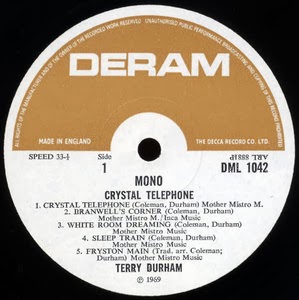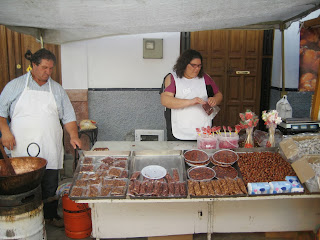Once again Man in Álora is not in Álora. Mrs. Sanchez, Tommy and I have returned to England again for the Winter Season which inevitably includes Christmas and all that festive fun. The generous winter fuel allowance allows us to turn up the heating and light a blazing festive smokeless fuel fire on which we toast muffins and crumpets and drink mulled wine while wrapping presents, trying to mend the Christmas tree lights and missing Álora.
This year has not gone as planned so far. We had only been back in Brum for a week when we received an e mail telling us that Terry Durham had died.
If you live or spend a lot of time in Álora you will have come across Terry either in person or you will know him 'by his works'.
He was an artist. He painted pictures. In all the time I knew him he wanted to do little else. He believed totally in his art. His style is immediately recognizable.
His images are mystical and often disturbing. They appear to draw on the dreams and stories of unspecified ancient civilizations. They occupy no specific place or time. Fish, birds, geckos and impossible plants and flowers fill his boards and canvasses along with 'dream children'..
Terry outside Bar Pinto wearing 'the hat'.
Terry was always happy to chat. For an artist he was unusually approachable. He loved to talk about his own work, of course, but he loved films, music, books (particularly crime novels) and was a fan of the 'Talk Radio Europe' Málaga football commentaries. His knowledge of Art was encyclopaedic. Among his favourites were Miró, Klee and Shiele.
Terry was fascinated with ' a line'. He used to say that he loved to just put a pencil on paper and take the line anywhere it wanted to go. He often started paintings with little idea of where they were going.
The Sanchez winter residence with one of Terry's paintings
I was privileged to know Terry and I will miss him very much. At his funeral in Álora his son-in-law, Sam spoke about Terry's stories from a life lived in London, Scilly, Portugal, Brazil and Yorkshire. There were many I hadn't heard and I was able to tell his family a couple he had told me which they didn't know.
Terry's 1969 LP. 'Crystal Telephone'
Terry was always 'broke'. He lived by selling his work and giving art lessons. He didn't look after his health. Sounds like the story of a typical 'struggling artist doesn't it. Terry was the real McCoy, as an artist, a friend and a thoroughly good bloke. I hope the exhibition he had planned for March 2014 will still go ahead.
Terry Durham (1936 -2013)
A happy Christmas to all my readers.
December 17th. 2013




















































.png)



